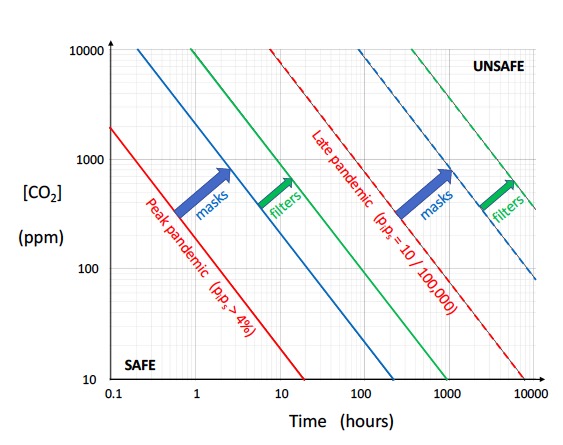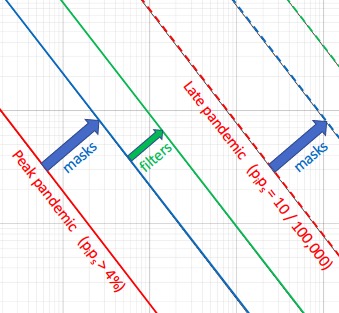
A new guideline for mitigating indoor airborne transmission of COVID-19 prescribes a limit on the time spent in a shared space with an infected individual (Bazant and Bush, 2021). Here, we rephrase this safety guideline in terms of occupancy time and mean exhaled carbon dioxide concentration in an indoor space, thereby enabling the use of CO2 monitors in the risk assessment of airborne transmission of respiratory diseases. While CO2 concentration is related to airborne pathogen concentration (Rudnick and Milton, 2003), the two differ owing to the different physical processes affecting their evolution; thus, our guideline accounts for these processes, including enhanced pathogen production from vocal activity, and pathogen removal via face-mask use, filtration, sedimentation and deactivation. Critically, transmission risk depends on the total infectious dose, so necessarily depends on both the pathogen concentration and exposure time. Our guideline is thus expressed in terms of a time limit that depends on CO2 levels that are monitored in real time. Consideration is also given to assessing the influence on transmission risk of the relative magnitudes of susceptible, infected and immune persons within a population, which necessarily evolve as the pandemic runs its course. Illustrative examples of the implementation of our guideline are presented using data obtained from CO2 monitoring of university classrooms and office spaces.
See preprint: Bazant, M.Z., Kodio, O., Cohen, A.E., Khan, K., Gu, Z. and Bush, J.W.M.
Select Press: Medical Life Sciences News
